Each and every member of Hudson’s crew . . . did his whole duty cheerfully and without the least hesitation. This appears the more remarkable in view of the fact that none of them had ever been under fire before and that the guns were without protection or shelter of any kind. They deserve the most substantial recognition in the power the [g]overnment for their heroic service upon this occasion. Lt. Frank Newcomb, After Action Report, USRC Hudson, 1898
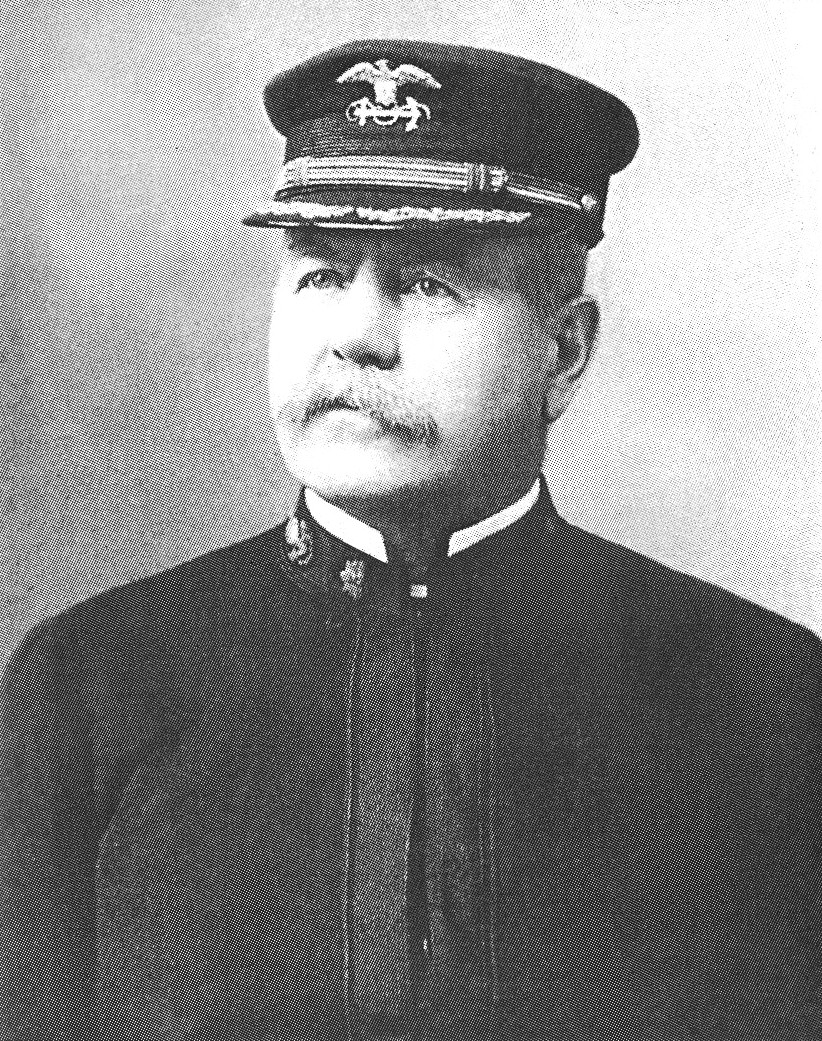
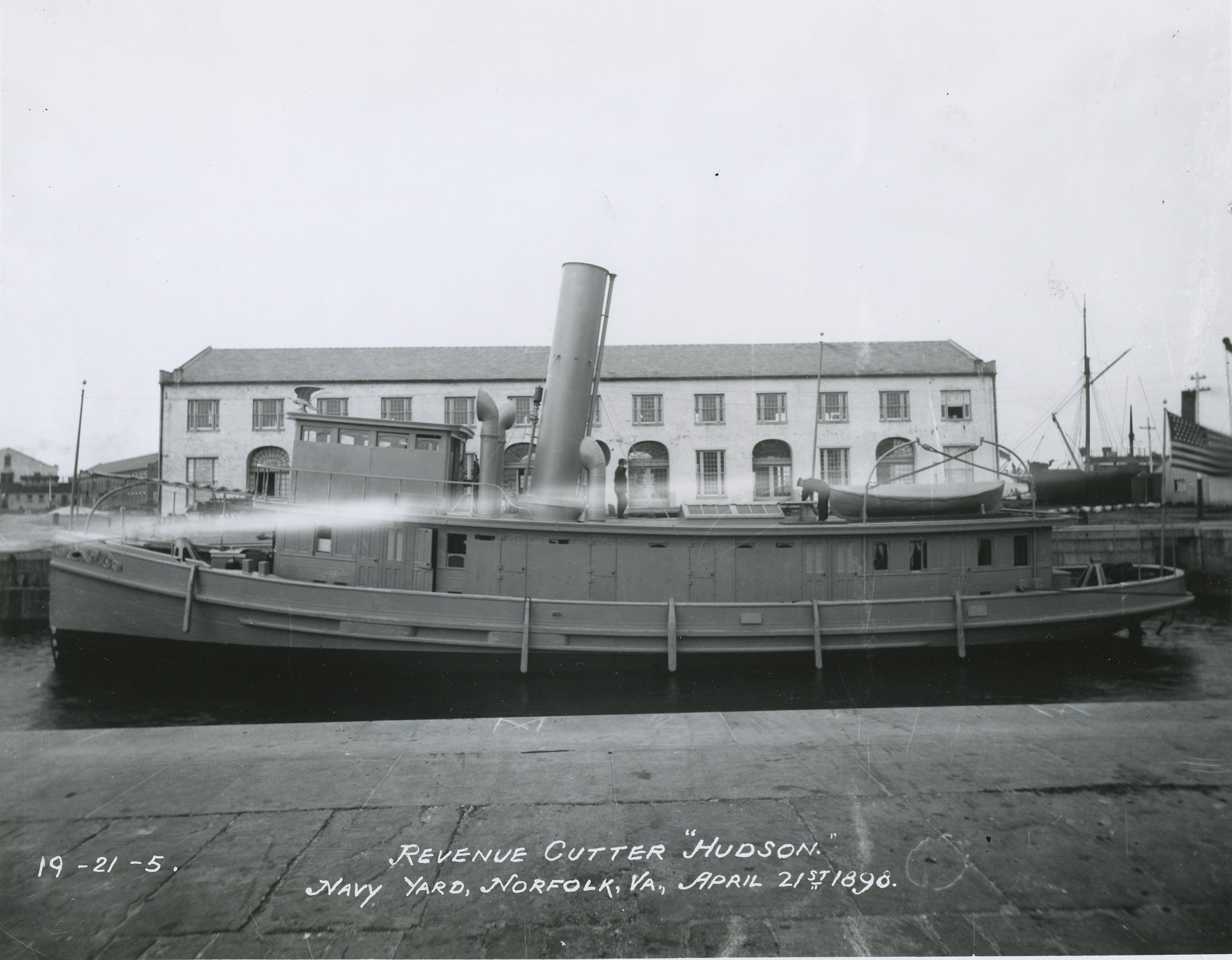 In September 1897, Lt. Frank Newcomb assumed command of the Revenue Cutter Hudson, home-ported in New York Harbor. During the 1890s, tensions had mounted between the United States and Spain over the island of Cuba. These tensions simmered until they began to boil over with the February 1898 sinking of the USS Maine in Havana Harbor. On the second day of April, the Hudson slipped its moorings and steamed south to the Norfolk Naval Shipyard to prepare for war.
In September 1897, Lt. Frank Newcomb assumed command of the Revenue Cutter Hudson, home-ported in New York Harbor. During the 1890s, tensions had mounted between the United States and Spain over the island of Cuba. These tensions simmered until they began to boil over with the February 1898 sinking of the USS Maine in Havana Harbor. On the second day of April, the Hudson slipped its moorings and steamed south to the Norfolk Naval Shipyard to prepare for war.
The Norfolk Navy Yard was buzzing with activity when Hudson arrived to take on arms, armor, and ammunition. The service’s first steel-hulled cutter, the 94-foot Hudson had a tugboat design and its crew included five officers, two warrant officers, and 18 enlisted men, including a cook, ship’s steward and ship’s boy. Hudson later received two six-pound rapid-firing guns, one each located fore and aft; and a Colt automatic “machine gun” mounted on top of the deckhouse. The cutter also had a layer of 5/8-inch armor bolted around the pilothouse and deckhouse.
Congress declared war with Spain April 21, and the Treasury Department officially transferred several revenue cutters, including Hudson to the Navy. Within two days, Hudson set out from Norfolk, Va., for Key West, Fla., the staging area for U.S. naval operations around Cuba. Hudson finally arrived at Key West on May 5, and Newcomb received his orders.
Due to Hudson’s draft of 10 feet, the naval command assigned the cutter to blockade the Cuban coast between the ports of Cardenas and Matanzas. On May 9, Hudson took up its duty station and by the next day, Newcomb began scouting the approaches to Cardenas Bay. Cardenas had three Spanish gunboats defending it and Newcomb tried his best to draw the vessels out for a fight, but they refused to leave the safety of the bay. Newcomb then sounded the two main channels into the bay only to find them filled with debris. He considered plowing his way through the debris, but feared the presence of underwater mines. After further reconnaissance, he found a third channel with no debris that was passable by shallow-draft vessels at high tide.
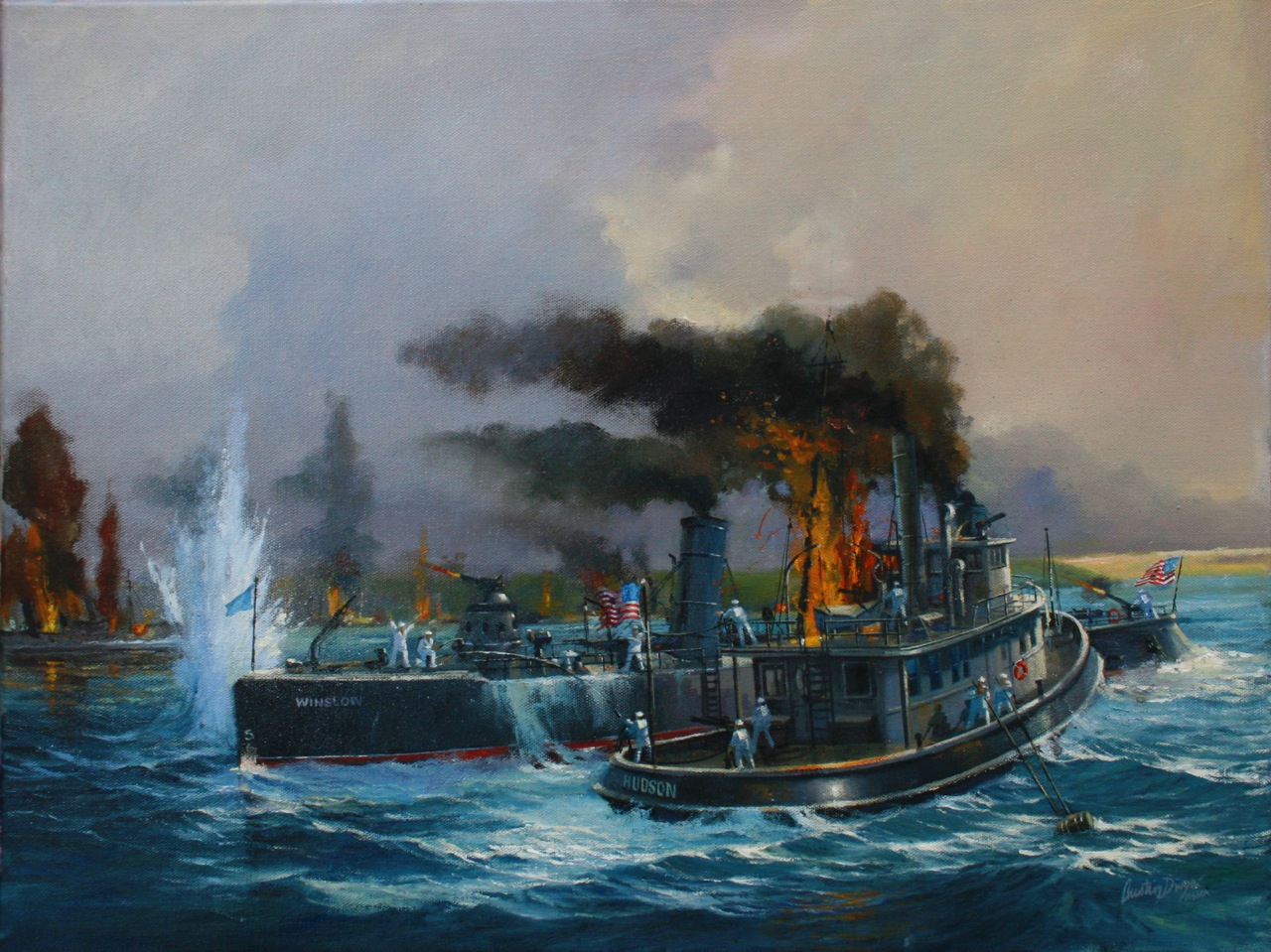 Newcomb developed a plan to capture the gunboats by sending American warships through the third channel. On May 11, gunboats USS Machias and USS Wilmington, and torpedo boat USS Winslow appeared outside Cardenas Bay to assist with Newcomb’s plan. The Machias drew too much water to enter the bay and participate in the attack. Instead, the gunboat laid down a barrage on the barrier islands to eliminate enemy snipers from the bay’s entrance. During high tide, between noon and 1:00 p.m., Hudson, Wilmington and Winslow steamed slowly through the narrow passage. Wilmington’s captain, Cmdr. Coleman Todd, sent Hudson in search of the gunboats on the eastern side of the bay and ordered Winslow to search the western side. Later, Winslow and Wilmington rendezvoused 3,500 yards offshore of Cardenas, where Todd spied the enemy gunboats moored at the city’s waterfront.
Newcomb developed a plan to capture the gunboats by sending American warships through the third channel. On May 11, gunboats USS Machias and USS Wilmington, and torpedo boat USS Winslow appeared outside Cardenas Bay to assist with Newcomb’s plan. The Machias drew too much water to enter the bay and participate in the attack. Instead, the gunboat laid down a barrage on the barrier islands to eliminate enemy snipers from the bay’s entrance. During high tide, between noon and 1:00 p.m., Hudson, Wilmington and Winslow steamed slowly through the narrow passage. Wilmington’s captain, Cmdr. Coleman Todd, sent Hudson in search of the gunboats on the eastern side of the bay and ordered Winslow to search the western side. Later, Winslow and Wilmington rendezvoused 3,500 yards offshore of Cardenas, where Todd spied the enemy gunboats moored at the city’s waterfront.
Todd ordered Winslow’s commanding officer, Lt. John Baptiste Bernadou, to investigate the situation. A Foote-class torpedo boat, Winslow seemed perfectly suited to capture or destroy the Spani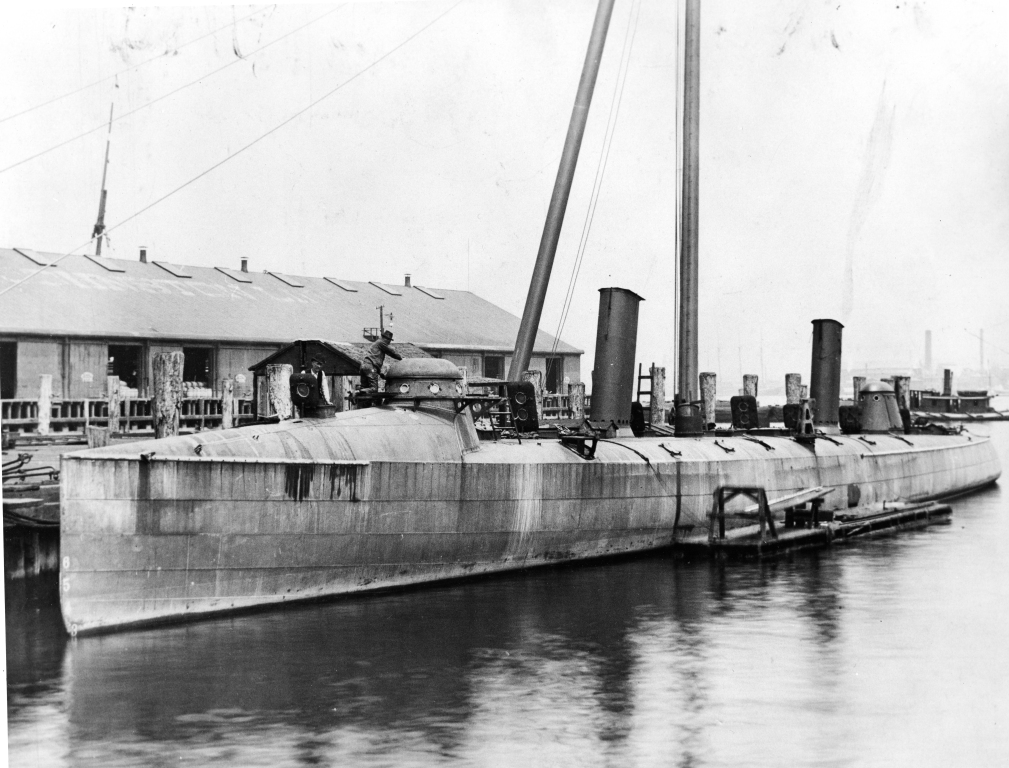 sh gunboats. It carried one-pound rapid-fire guns and torpedoes, and drew only five feet. Winslow also carried a crew of 20 enlisted men and two officers. Executive officer, Ensign Worth Bagley, came from a distinguished North Carolina military family that included brother-in-law Josephus Daniels, later Secretary of the Navy.
sh gunboats. It carried one-pound rapid-fire guns and torpedoes, and drew only five feet. Winslow also carried a crew of 20 enlisted men and two officers. Executive officer, Ensign Worth Bagley, came from a distinguished North Carolina military family that included brother-in-law Josephus Daniels, later Secretary of the Navy.
As often happens in combat, the original plan of attack fell apart after the fighting began. Bernadou backed the stern of Winslow toward Cardenas, likely to minimize exposure to the enemy, make use of his stern-mounted torpedo and allow for a fast exit strategy. However, as soon as Winslow came within 1,500 yards of the city’s wharves, Bernadou found himself sitting between white range buoys deployed by Spanish artillerymen to aim their guns. Enemy gunners opened fire with one-pound guns from the gunboats and salvoes from heavier land artillery hidden along the waterfront.
After witnessing the initial salvoes, Hudson steamed at top speed from the bay’s eastern side and Newcomb requested Todd’s permission to engage the enemy. By 2:00 p.m., the Spanish guns and artillery had fired on the Winslow as well as Hudson and the distant Wilmington. According to an eyewitness account, the enemy rained down shells from half-a-dozen directions, but the Spanish positions were tough to spot because their gunners used smokeless powder. The Americans relied on outdated black powder, which clouded the gun crews’ vision and alerted the Spaniards of incoming shells.
As the battle raged, Spanish gunners focused their fire on Winslow, shooting down its smokestack and ventilator, holing its armored conning tower, and disabling its steering gear and engines. In addition, an on-shore wind was pushing the crippled vessel toward shore and shallow water. Bernadou called out to the approaching Hudson, “I am injured; haul me out.”
Newcomb reacted instantly, steering Hudson through the muddy shallows and churning up brown water with the cutter’s propeller. The cutter came in close while Bagley and a number of Winslow’s crew stood on deck to receive a heaving line. The enemy fire intensified and Bagley yelled out, “Heave her. Let he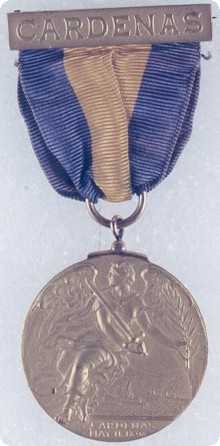 r come. It’s getting pretty hot here.” By the time Hudson closed the distance, an enemy shell exploded on board Winslow, killing Bagley and an enlisted man and mortally wounding three others. These men were the first casualties of the Spanish-American War and Bagley the first American officer killed in the conflict. A number of the men would posthumously receive the Medal of Honor.
r come. It’s getting pretty hot here.” By the time Hudson closed the distance, an enemy shell exploded on board Winslow, killing Bagley and an enlisted man and mortally wounding three others. These men were the first casualties of the Spanish-American War and Bagley the first American officer killed in the conflict. A number of the men would posthumously receive the Medal of Honor.
Despite the enemy shelling, unfavorable winds and shallow water, Hudson’s crew managed to secure a three-inch hawser to the Winslow and began towing it out of range. Within minutes, the hawser severed by an incoming shell. Newcomb persevered exclaiming, “We will make it fast this time.” Risking his own vessel and crew a second time, Newcomb plowed further into the mud, backing and filling to carve a ditch in the silty bay bottom toward the Winslow. Hudson’s engineers never missed an engine order bell during the cutter’s fast-changing engine operations. Meanwhile, the cutter’s deck crew secured a line to Winslow and made fast the torpedo boat beside the cutter in tugboat fashion. This time, the Hudson succeeded i n hauling the stricken vessel beyond the range of enemy guns.
n hauling the stricken vessel beyond the range of enemy guns.
Hudson not only saved the Winslow from certain destruction, it poured 135 six-pound shells into the enemy in only 20 minutes. After the fierce firefight, Newcomb received orders to ferry Winslow’s dead and wounded to medical facilities at Key West. In the evening, the casualties were loaded aboard the cutter and Newcomb steamed at top speed to the Navy’s base of operations, arriving at 7:00 a.m., the next day. In one exhausting 24-hour period, Newcomb and his men had scouted Cardenas Bay, fought the enemy, rescued the Winslow and sped the Navy casualties to distant Key West.
In mid-August, at the conclusion of the brief war, Hudson returned to a rousing welcome at its homeport of New York. In a special message to Congress, President William McKinley congratulated Hudson’s crew for rescuing the Winslow “in the face of a most galling fire” and recommended special recognition for the men. A joint resolution of Congress honored Hudson’s junior officers with Congressional Silver Medals and Bronze Medals to its enlisted crewmembers. These men were the service members awarded medals for combat action and the two African-American enlisted crewmembers were the service’s first minority members honored for heroism in combat. Newcomb received the war’s only Congressional Gold Medal, also known as the Cardenas Medal. He would later be honored as namesake of the U.S. Navy’s World War II Fletcher-Class destroyer, USS Newcomb.